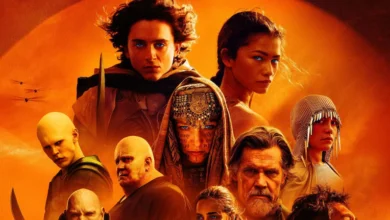The Enduring Legacy of Charlottesville Virginia: Where History Meets Modernity

Nestled in the foothills of Virginia’s Blue Ridge Mountains, Charlottesville is far more than just a picturesque college town. With a legacy intertwined with America’s founding, a vibrant cultural scene, and ongoing dialogues about its complex past, Charlottesville offers a compelling microcosm of American history and evolution. Named for Queen Charlotte Sophia, consort of King George III, and established in 1762, this independent city thrives as a dynamic blend of tradition and progress 145.
1 Founding and Colonial Beginnings
The earliest known settlement in the area was the Monacan Indian village Monasukapanough, located approximately five miles north of present-day downtown Charlottesville, overlooking the Rivanna River 6. European settlers followed the Three Notch’d Road, a vital east-west trade route from Richmond to the Shenandoah Valley (now the site of Charlottesville’s Historic Downtown Mall and East Main Street) 58. By an Act of the Virginia General Assembly on December 23, 1762, fifty acres around the Albemarle County Courthouse were formally divided into half-acre lots, establishing the town grid that still forms downtown’s core 18. Named for Queen Charlotte, Charlottesville replaced Scottsville as the county seat, strategically positioned along the transportation corridor 45. Early growth was slow; a 1779 account described it as merely “a court house, one tavern and about a dozen houses” 8.
Table: Charlottesville’s Early Development Timeline
| Year | Event | Significance |
| 1735 | Abraham Lewis secures 800 acres | Land includes future UVA grounds |
| 1750s | Nicholas Meriwether patents 15,000 acres | “The Farm” becomes modern Charlottesville |
| 1762 | Official founding by Act of Assembly | Establishes town grid and courthouse square |
| 1763 | First land lot sales | 14 of 28 lots sold to 7 individuals |
| 1801 | Incorporation as a town | Trustees authorized to govern local affairs |
2 Presidential Heritage and Architectural Legacy
Charlottesville’s identity is inextricably linked to three U.S. presidents who made the region their home. Thomas Jefferson’s Monticello, his neoclassical masterpiece designed in the Palladian style, sits majestically on a hill 3 miles southeast of the city. Jefferson meticulously crafted and rebuilt his home over four decades (1770-1809), embedding innovative technologies and personal philosophies into its structure 14. Nearby lies James Monroe’s Highland (formerly Ash Lawn-Highland), a plantation home designed with input from Jefferson, where Monroe lived from 1798 to 1820 34. A short drive away in Orange County stands James Madison’s Montpelier, home to the “Father of the Constitution” 36.
Jefferson’s final and arguably greatest achievement was founding the University of Virginia (UVA) in 1819. His “Academical Village,” with the Rotunda at its heart, was a revolutionary model for higher education, emphasizing secular learning and student-professor collaboration. UVA’s Lawn and pavilions, along with Monticello, form the only UNESCO World Heritage Site in the United States dedicated to a single individual 134. Jefferson deliberately placed the university just outside town, leading commercial activity to stretch toward it, creating the bustling intersection known as “The Corner”—a nickname coined nearly 200 years ago 56.
3 Transportation, Industry, and Civil War Impact
The arrival of the Louisa Railroad Company in 1850 marked a transformative moment, connecting Charlottesville to Richmond and fueling economic growth. Over 400 enslaved laborers constructed this critical link, described as “an important link in the connection of the metropolis with the West” 2. Rail lines spurred manufacturing, including the Charlottesville Woolen Mills, which produced Confederate uniforms during the Civil War 16. Remarkably, Charlottesville itself escaped major physical destruction during the war, though it played a significant role as a medical center. The University of Virginia’s Rotunda and pavilions served as a 500-bed Confederate hospital, treating over 22,000 wounded soldiers under Dr. J.L. Cabell’s supervision 6. The city’s preservation resulted partly from Mayor Christopher L. Fowler’s surrender to Union Generals Philip Sheridan and George Custer in 1865, preventing widespread destruction 1.
Urban mobility evolved dramatically with the 1887 debut of horse-drawn streetcars, later electrified in 1895. These lines spurred suburban development like Belmont and fueled real estate booms by companies such as the Belmont Land Company 28. The “Good Roads Movement,” championed locally by figures like Mayor C.W. Allen and UVa’s Dr. D.B. Barringer, gained momentum in the early 20th century, leading to road levies and infrastructure improvements essential for automobiles 2. J.P. “Dry Goods” Ellington purchased Albemarle County’s first automobile in 1906, triggering a transportation revolution that saw 1,800 cars in the county by 1922 2.
4 African American Experience and Racial Struggles
Charlottesville’s African American community, comprising a majority of the population before the Civil War, forged resilient institutions despite systemic oppression. The First Baptist Church, established in 1864, became the city’s first Black church, with Rev. William D. Gibbons as its first African American pastor 1. The early 20th century saw strict Jim Crow segregation, including unequal parks, schools, and businesses. The local NAACP branch formed in 1947, becoming a critical force for civil rights 1[citation:19].
A pivotal tragedy unfolded in 1965 with the urban renewal destruction of Vinegar Hill. This thriving downtown Black neighborhood—home to 130 families, five businesses, and a church—was condemned as “unsanitary and unsafe” and razed. Displaced residents were largely relocated to the Westhaven public housing project, fracturing a vibrant community 1[citation:23]. Decades later, conflicts over Confederate symbols brought national attention. Efforts to remove statues of Robert E. Lee and Stonewall Jackson from downtown parks sparked the deadly “Unite the Right” rally in August 2017, where white supremacists clashed with counter-protesters, culminating in the murder of Heather Heyer 14. After protracted legal battles, the statues were finally removed on July 10, 2021 1[citation:35].
5 Modern Identity: Culture, Governance, and Tourism
Today, Charlottesville harmonizes its historical depth with contemporary vitality. The Historic Downtown Mall—an eight-block pedestrian zone on the original Three Notch’d Road—features boutique shops, farm-to-table restaurants like the acclaimed Public Fish & Oyster, and cultural venues such as the Paramount Theater 56. The Jefferson School African American Heritage Center serves as a crucial space for exploring Black history and contemporary art, while the Kluge-Ruhe Aboriginal Art Collection remains the only U.S. museum dedicated to Indigenous Australian art 37.
The city operates under a council-manager government adopted in 1922. A five-member City Council appoints a professional manager (currently Samuel Sanders) to oversee daily operations, with current Mayor Lloyd Snook and Vice-Mayor Juandiego Wade leading policy initiatives 8[citation:16]. UVA anchors the economy as the largest employer, while tourism draws millions annually to Monticello, UVA, and the region’s burgeoning wineries and breweries 46. Cultural events thrive at the Sprint Pavilion, attracting global icons like the Dave Matthews Band (local residents) and hosting the annual Tom Tom Festival 6.
Table: Key Cultural and Historical Institutions
| Institution | Focus | Location |
| Monticello | Thomas Jefferson’s plantation & UNESCO site | 931 Thomas Jefferson Pkwy |
| Jefferson School African American Heritage Center | Black history, art, and events | 233 4th St NW |
| Kluge-Ruhe Aboriginal Art Collection | Indigenous Australian art | 400 Worrell Dr |
| Albemarle Charlottesville Historical Society (ACHS) | Regional archives and exhibits | 200 Second St NE |
| Michie Tavern | Colonial-era tavern museum | 683 Thomas Jefferson Pkwy |
6 Preservation and Future Directions
Organizations like the Albemarle Charlottesville Historical Society (ACHS) tirelessly document and interpret the region’s layered past. Located at McIntire Library, ACHS houses invaluable resources, including Frances Brand’s “Gallery of Firsts” portraits celebrating pioneering local African Americans and women 7. Community-driven projects like Cvillepedia—a public wiki—ensure ongoing collective memory-building 78. Challenges remain, from reconciling histories of enslavement at presidential plantations to addressing affordable housing shortages exacerbated by tourism and university growth. Yet, Charlottesville’s commitment to inclusive storytelling and civic engagement positions it as a living laboratory for America’s ongoing journey toward a more perfect union.
Frequently Asked Questions
Q: What is Charlottesville’s population?
A: As of July 2021, Charlottesville’s population is approximately 51,079. The broader Charlottesville Metropolitan Statistical Area—including Albemarle, Fluvanna, Greene, and Nelson Counties—has over 221,000 residents 18.
Q: Why is Charlottesville historically significant?
A: It was home to U.S. Presidents Thomas Jefferson, James Monroe, and James Madison. Jefferson founded the University of Virginia here. Monticello and UVA form a UNESCO World Heritage Site. The city also witnessed pivotal civil rights struggles, including the 2017 Unite the Right rally 134.
Q: What are the top attractions for visitors?
A: Key sites include Monticello, UVA’s Rotunda and Lawn, James Monroe’s Highland, Michie Tavern, the Historic Downtown Mall, and the Jefferson School African American Heritage Center. Wine tours along the Monticello Wine Trail are also popular 356.
Q: How did Charlottesville get its name?
A: Founded in 1762, it was named after Queen Charlotte Sophia of Mecklenburg-Strelitz, wife of King George III of England 145.
Q: What is the current status of Confederate statues?
A: After years of litigation and the deadly 2017 Unite the Right rally, statues of Robert E. Lee, Stonewall Jackson, and the Lewis & Clark Expedition (including Sacagawea) were removed from downtown parks in July 2021 1[citation:35][citation:36].
Charlottesville embodies the tensions and triumphs of American history. From the ideals enshrined in Jefferson’s university to the painful reckonings over Vinegar Hill and Confederate monuments, the city continually navigates the distance between aspiration and reality. Its rolling landscapes, architectural treasures, and vibrant arts scene invite exploration, while its ongoing dialogue about justice and memory offers profound lessons. As the Albemarle Charlottesville Historical Society aptly notes: “History is not the past; it is the story we tell about the past” 7.



